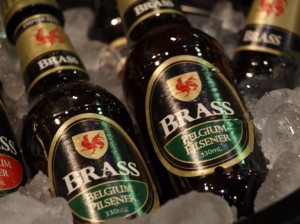Is Ken Helm pushing it up hill? Or does cabernet really have a future in Canberra? I mean not just as a nice wine – but in the sense, as Helm sees it, that it might snap at the heals of our regional top dog, shiraz?
Releasing his 2009 vintage recently, Helm wrote, “Cabernet sauvignon in the Canberra District has suffered from a myth that it is too cold to ripen” – then lists a string of accolades, some more credible than others, stretching back to 1983.
Helm cabernet’s run of gold medals and trophies at the Cowra, Sydney, Hobart and Cool Climate wine shows began in1983 but ended in 1998 – about the time as shiraz stuck its head up (though, this is probably a coincidence).
Thereafter, the third-party praise on Helm’s list comes mainly through individual critics, including Australia’s James Halliday and Nick Stock and America’s Robert M. Parker. But the praise peaks with Halliday’s 94/100 for Helm Premium Cabernet Sauvignon 2005 (the score subsequently declined to 89 for the 2006 vintage).
Putting this in perspective, Halliday gave higher scores to several Canberra shirazes from the 2008 vintage. These included 95, 96, and 97 for three different Clonakilla wines, 96 for Collector Reserve, 95s for Lerida Estate, Capital Hill Kyeema Vineyard Reserve and Collector Marked Tree, and 94 for Nick O’Leary 2008.
And if we look to the regional show, we see little support for cabernet. Between 1997 and 2011 the trophy for champion wine of show was awarded to a Canberra shiraz on 10 occasions. Indeed, in 14 years, only two non-shiraz wines won the prize – a chardonnay from Orange in 1997 and Helm Premium Riesling 2008 in 2009 (shared with a shiraz from Hilltops). Cabernet simply hasn’t had a look in at the top level.
After judging a couple of lacklustre cabernet classes in the 2011 show, the judges, led by sommelier Ben Edwards, commented, “Obviously cabernet and family represents significant viticultural challenges in the region, so sensitive management of tannin/extraction is paramount. The top wines showed this”.
They’re basically saying it’s difficult to ripen cabernet in Canberra, but the top wines show that it’s possible. That cabernet requires more heat than shiraz to ripen isn’t in dispute.
In Wine, Terroir and Climate Change, John Gladstones classifies the world’s best-known wine grape varieties into maturity groups, based on degree days (a measure of total heat received during the growing season).
Gladstones derives his classification from a number of studies published between 1857 and 1997. At 1,260 degree days, shiraz sits one classification below cabernet, which requires 1,380 degree days to ripen. However, much of Canberra achieves more than 1,380 degree days in a season.
But total heat doesn’t tell the full story. The day-night temperature range also affects grape development and flavour. And when we look at great cabernet regions and great shiraz regions we see a marked contrast. This might explain why cabernet so demonstrably underperforms shiraz in Canberra.
Bordeaux, the home of cabernet, sits on the Dordogne estuary. It’s a true maritime climate – just like those of Margaret River and Coonawarra, Australia’s leading cabernet regions. The diurnal temperature ranges in theses areas, during the ripening period, is comparatively low.
Shiraz, on the other hand, reaches its peak (in the old world) in the northern Rhone Valley’s continental climate, where the diurnal temperature range is comparatively wide – like Canberra’s.
Gladstones believes that “relatively constant, intermediate temperatures during ripening specifically favour the biochemical processes of colour/flavour/aroma development of the berries”. He concludes that “the narrower the range of variation about a given mean or average ripening temperature, the greater the great flavour, aroma and pigmentation will be at a given time of ripening”.
That view intersects nicely with the great wines of Bordeaux, Margaret River and Coonawarra – and points towards the difficulty of getting cabernet just right in Canberra’s continental client. (But it also sits at odds with the outstanding shirazes we make!).
My own experience from years of wine show judging, private tastings and social drinking is that Canberra’s best shirazes rate with the best in Australia. Our cabernets, on the other hand, simply don’t compare, to date, with the country’s best. As well, our average shiraz tastes better than our average cabernet.
But that doesn’t mean we shouldn’t make cabernet or, like Ken Helm, tackle the obstacles and shoot for the stars. The woods would be awfully quiet if the only birds that sang were those that sang best.
The fact is that Canberra makes many decent cabernets. And our region – ranging from 500 metres above sea level to almost 900 metres – offers a wide climatic range for anyone willing to experiment with cabernet or any other variety in the future.
Remember, too, that other revered shiraz regions – including the Barossa, McLaren Vale and the Clare Valley – make very good cabernet and have done so successfully for 150 years.
These will never be great regional specialties. But, like Canberra cabernet, they enjoy a following, they offer a different flavour and structure from shiraz and they’re here to stay.
While the odds appear stacked against Helm, he’s made notable progress in recent years, both viticulturally with grower Al Lustenberger and fine-tuning in the winery, particularly in regard to oak maturation.
There’s always an exception to a rule. And if anyone can be the exception, it’s Helm. People once pooh-poohed the idea of cabernet in Tasmania. But then along came Peter Althaus and Domaine A’s extraordinary wines. Perhaps Canberra can have a Domaine B.
Copyright © Chris Shanahan 2012
First published 29 February 2012 in The Canberra Times
